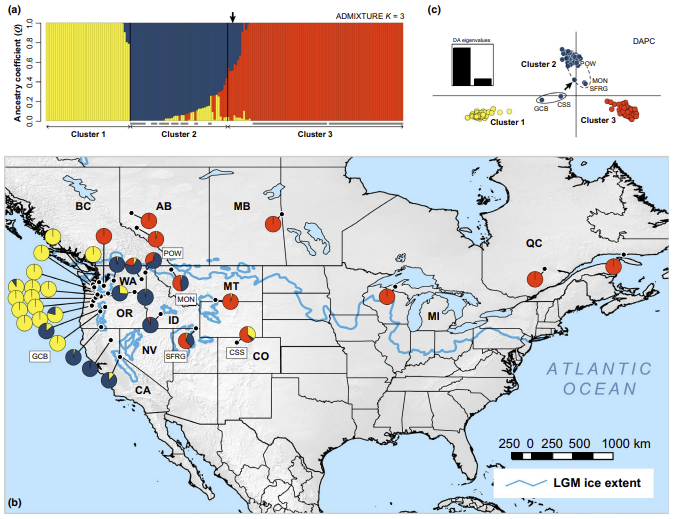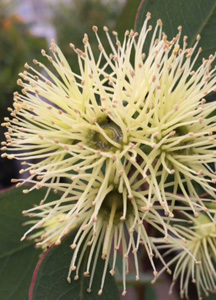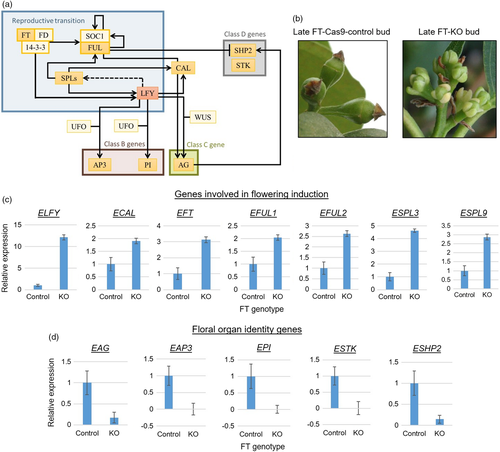Migration History of Willamette Valley Aspens
Aspens are largely absent from the coast range and Willamette Valley of Oregon, however, they are abundant high in the Cascade Mountains. The rarity and physical location of aspens in the Willamette Valley suggested that they might have migrated by a very different path than the Cascade Aspens—possibly from a near-Pacific glacial refugium, or brought down to the Willamette Valley by the catastrophic, glacial Missoula Floods that originated in the Rocky Mountains of Montana. The floods reached the Willamette Valley several times about 10,000-15,000 years ago, depositing large rocks and soil. With the ability of aspen to spread vegetatively, it is reasonable to expect that they “surfed” down at the same time. We evaluated these two hypotheses by using genotype-by-sequence (GBS) genome sequencing method, and found that indeed the Willamette Valley aspens did not resemble those in the Cascades at all, but they also did not resemble those in the Missoula flood track. They were a distinctive group, related to other near coastal aspens in Washington and Oregon, thus likely had a unique refugium origin.
The results of this study were published in 2020 in the journal Ecology and Evolution (view the pdf).

Figure from Bagley et al. 2020, showing the three distinctive main varieties of aspen in the United States. The yellow group is the Willamette Valley aspen that was the motivation for the study.
 Flowering Modification in Trees
Flowering Modification in Trees
The movement of genes from genetically engineered and exotic trees are social, ethical, and ecological problems for society. These problems inhibit acceptance of genetic engineering as a method of tree breeding. We are pursuing a number of different methods to prevent unwanted gene movement. These methods will hopefully enable wider use of genetic engineering to improve tree growth and reduce environmental impacts of forest management. We focus on three genera of trees important to forestry and ornamental horticulture: Populus (poplar, aspen, cottonwood), Eucalyptus, and Liquidambar (sweetgum). We summarized available methods for containment in a scientific review paper (Vining et al. 2012), and also published methods for inducing rapid flowering to speed breeding and research (e.g., Klocko et al. 2015). A major effort on RNAi-modified trees based on this grant from USDA resulted in a publication in PLOS One on apples in 2015, this publication in Nature Biotechnology in 2016 on field grown poplar trees, and this publication in New Phytologist in 2019 focused on modified poplar catkins. Our work has increasingly used CRISPR, this publication in Plant Biotechnology Journal in 2021 focused on Eucalyptus, and this review of methods for trees and clonal crops in 2021.

Figure from Elorriaga et al. 2021, showing the effects of CRISPR mutation of the Eucalyptus LEAFY gene on floral floral bud morphology and the early floral transcriptional network.